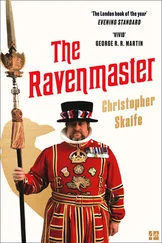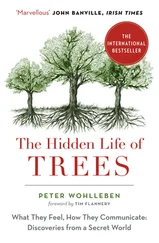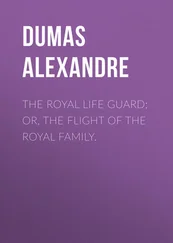I’ve heard it said that the name of London derives from Lugdunum, from the Celtic lugdon , meaning town of ravens – mind you, I’ve also heard that London comes from Llyn-don, Laindon, Karelundein, Caer Ludd, Lundunes, Lindonion, Lundene, Lundone, Ludenberk, Longidinium, and goodness knows what else. History and prehistory, legends, fables and stories, they’re everywhere here. I sometimes think that the Tower is just a vast storehouse of the human imagination, and the ravens are its guardians.
Anyway, I refill the bowl by St Peter ad Vincula, where generations of Tower residents have been baptised – not in the ravens’ water bowl, I might add – and married and, most famously, buried, including Sir Thomas More, Bishop Fisher, Queen Anne Boleyn, Queen Catherine Howard, and Lady Jane Grey, the uncrowned queen of only nine days. Quite a few of them were also executed near the Chapel, or within the walls of the Tower – Anne Boleyn, of course, and Catherine Howard, Lady Jane Grey, Margaret Pole, Robert Devereux – so it’s certainly a church with a colourful history, though I’ve always thought the historian Thomas Macaulay was a bit down on the place in his 1848 History of England :
In truth there is no sadder spot on the earth … Death is there associated, not, as in Westminster Abbey and Saint Paul’s, with genius and virtue, with public veneration and imperishable renown; not, as in our humblest churches and churchyards, with everything that is most endearing in social and domestic charities; but with whatever is darkest in human nature and in human destiny, with the savage triumph of implacable enemies, with the inconstancy, the ingratitude, the cowardice of friends, with all the miseries of fallen greatness and of blighted fame.
It’s not that bad! I rather like the Chapel. It’s our parish church, after all, with a chaplain to guide and direct our spiritual lives and a fine choir and organists to lead the worship and uplift our spirits. Though to be honest I prefer to say my prayers outside, with brush and bucket in hand.
Fresh water sorted, brush and bucket safely stowed, every morning I then make my way to unlock the storeroom where I keep all of the food and equipment needed to aid me in looking after the ravens. I walk under the archway of the Bloody Tower onto the old cobbles of Water Lane (so called because this is where the water of the Thames used to lap up against the walls of the Tower). Water Lane is part of Edward I’s Outer Ward, which was created during his big expansion programme in the thirteenth century. It was reclaimed from the river by sinking thousands of beech piles into the Thames mud. I like having the storeroom here. I’ve always thought that back in the day Water Lane would have been full of wheelers and dealers, and duckers and divers coming in and out of the Tower and the old pubs that used to be here – the Stone Kitchen tavern was one, shut down by the Duke of Wellington long ago. The Tower has always been full of people, inside and out, and the Ravenmaster’s storeroom just sort of fits here, right in the thick of things, behind its own ancient black door, like an old apothecary’s shop.
On my keyring, like all the other Yeoman Warders, I keep a whistle, to alert the others if there’s a problem. Plus I have a little skull-and-crossbones memento mori – you can’t work with ravens and not develop a bit of a taste for the macabre – and a small wooden raven totem pole, which I keep as a kind of talisman.
Now, let me open up the storeroom and show you the Ravenmaster’s inner sanctum.
7
I like to keep the storeroom neat and tidy at all times, the result no doubt of a lifetime in the military. When you join the army as a young recruit you’re taught everything, and I mean everything . You learn how to clean your teeth and how to make your bed and tie your boots, how to iron and fold your clothes. Above all, you’re taught never to just leave stuff lying around. It’s drilled into you. You survive by following routines and procedures. A place for everything and everything in its place. No excuses.
So, in the storeroom there’s the fridge, the freezer, the sink and the counter tops, all kept spick and span. Raven calendar on the wall, obviously, and our daily diary underneath it, so the whole team can keep up to date and log what’s happening with the birds. There’s the fishing net on its shelf, used for raven-catching purposes, if a bird is injured and needs immediate veterinary attention. Chasing a raven around the Tower in full view of the public, fishing net in hand, like the Child Catcher from Chitty Chitty Bang Bang – believe me, that really is an experience. The first-aid kit: you certainly know if you’ve had a nip from a raven. Scales for weighing the birds, which we do once a month. Chopping boards and equipment for preparing the meals. Rubber gloves. Leather falconry gloves. Metal gauntlets – which I do not recommend for handling the ravens, because they do sometimes like to try to crush your fingers, and picking metal out of flesh is never nice, as I can testify. A couple of wooden boxes to carry sick birds to the vets we work with at London Zoo. There’s also an old plastic KerPlunk, which we like to use for the ravens’ entertainment. (In KerPlunk: The Raven Edition, the challenge for the birds is to remove the straws in order to win a dead mouse which we place in the tube, ready to fall down and be eaten. Good clean raven fun. Munin is the reigning champion.) I also keep a jar full of raven feathers in the storeroom, kindly donated by the ravens once a year during their moult, and which I occasionally like to distribute to deserving/well-behaved/lucky visitors. If I’m doing a Tower tour, for example, and I discover that a couple are recently married or engaged, I like to give them a pair of feathers – a primary and a secondary, since without one the other is no good. I’m an old romantic at heart. Sometimes people request feathers for use as quills, or for medicinal purposes, or for musical instruments, though exactly which musical instruments or for what medicinal purposes I’m not entirely sure, or indeed whether raven feathers make particularly good quills.
As the Ravenmaster you get used to fielding all sorts of bizarre requests and questions from the public. No, you cannot buy the birds. No, you cannot sponsor them. And no, you cannot borrow them. They belong to the Tower – or the Tower belongs to them. In case you’re interested, here are the top five questions that people tend to ask us Yeoman Warders, and the sort of answers we like to give:
1. ‘Where’s the bathroom?’
Usually asked by our American visitors, who – may I say – are unfailingly charming and polite. Alas, in British English we tend to rather crudely refer to what Americans call the bathroom as the ‘toilet’, and to us a bathroom is the place you go to have a bath, so we tend to reply, ‘Why, sir, do you need a bath?’
2. ‘Where are the instruments of torture?’
Answers to this one vary from Yeoman Warder to Yeoman Warder, but they tend to go along the lines of ‘Try working here every day and you’ll soon find out.’
3. ‘Where was Anne Boleyn executed?’
This one demands the obvious answer, ‘Somewhere around the neck area, sir.’
4. ‘Have you ever seen a ghost?’
Some Yeoman Warders like to use this question as a prompt to tell the classic tales about the boy princes, the headless apparitions, Sir Walter Raleigh on the battlements, and all the other chain-rattling Victorian nonsense. My preferred response tends to be something like, ‘No, sir, but we certainly keep plenty of spirits in our clubhouse.’
5. ‘Who built the Tower?’
The Tower was built over the course of several centuries (though the medieval defences are essentially unchanged), so this question can elicit all sorts of responses, ranging from the patriotic ‘As well to ask, sir, who built the spirit of the Great British people!’ to ‘Well, we haven’t quite finished it yet, but we’re getting there,’ to a fully comprehensive explanation of the major enlargements and extensions to the building undertaken by Edward III and Richard II during the fourteenth century, to the confusing but accurate ‘1075/1078/1080, depending on which historical sources you consult.’ I prefer to explain that the Tower was founded by William the Conqueror and that the building of the great White Tower in stone was probably supervised by the Bishop of Rochester, Gundulf of Bec, who is not to be confused with Gandalf the Grey.
Читать дальше












